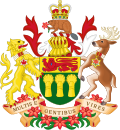| Term | Minister | Title | Administration | Source |
|---|
| 2024 – Present | Honourable David Marit | Highways and Transportation Minister | under Scott Moe | [1] [18] |
| 2022 – 2024 | Honourable Lori Carr | Highways and Transportation Minister | under Scott Moe | [1] |
| 6 January 2020 – 2022 | Honourable Fred Bradshaw | Highways and Transportation Minister | under Scott Moe | [1] |
| 20 November 2020 – 6 January 2020 | Honourable Joe Hargrave | Highways and Transportation Minister | under Scott Moe | [1] |
| 21 November 2007 | Honourable Wayne Elhard | Highways and Transportation Minister | under Brad Wall | [1] |
| 12 October 2001 – 21 November 2007 | Honourable Mark Wartman | Highways and Transportation Minister | under Lorne Calvert | [19] |
| 8 February 2001 – 12 October 2001 | Honourable Patricia Atkinson | Highways and Transportation Minister | under Lorne Calvert | [19] |
| 30 September 1999 – 8 February 2001 | Honourable Maynard Sonntag | Highways and Transportation Minister | under Roy Romanow | [20] |
| 27 June 1997 – 30 September 1999 | Honourable Judy Llewellyn Bradley | Highways and Transportation Minister | under Roy Romanow | [21] [22] |
| 29 April 1997 – 27 June 1997 | Honourable Clay J. Serby | Highways and Transportation Minister | under Roy Romanow | [21] |
| 20 September 1993 – 25 April 1997 | Honourable Andrew (Andy) L.J. Renaud | Highways and Transportation Minister | under Roy Romanow | [21] |
| 4 June 1993 – 20 September 1993 | Honourable Darrel Cunningham | Highways and Transportation Minister | under Roy Romanow | [21] |
| 29 September 1992 – 4 June 1993 | Honourable Murray James Koskie | Highways and Transportation Minister | under Roy Romanow | [21] |
| 1 November 1991 – 29 September 1992 | Honourable Bernhard H. Wiens | Highways and Transportation Minister | under Roy Romanow | [21] |
| 3 October 1989 – 1 November 1991 | Honourable Sherwin Petersen | Highways and Transportation Minister | under Grant Devine | [21] |
| 16 December 1985 – 3 October 1989 | Honourable Grant Milton Hodgins | Highways and Transportation Minister | under Grant Devine | [21] |
| 4 December 1985 – 16 December 1985 | Honourable Donald Grant Devine | Highways and Transportation Minister | under Grant Devine | [21] |
| 8 May 1982 – 4 December 1985 | Honourable James William Arthur Garner | Highways and Transportation Minister | under Grant Devine | [21] |
| 16 December 1980 – 8 May 1982 | Honourable Robert Gavin Long | Highways and Transportation Minister | under Allan Blakeney | [21] |
| 12 May 1972 – 16 December 1980 | Honourable Eiling Kramer | Highways and Transportation Minister | under Allan Blakeney | [21] |
| 30 June 1971 – 12 May 1972 | Honourable Neil Erland Byers | Highways and Transportation Minister | under Allan Blakeney | [21] |
| 18 October 1966 – 30 June 1971 | Honourable David Boldt | Highways and Transportation Minister | under Ross Thatcher | [21] |
| 22 May 1964 – 18 October 1966 | Honourable Gordon Burton Grant | Highways and Transportation Minister | under Ross Thatcher | [21] |
| 7 November 1961 – 22 May 1964 | Honourable Clarence George Willis | Highways and Transportation Minister | under Woodrow Stanley Lloyd | [21] |
| 1 August 1960 – 7 November 1961 | Honourable Clarence George Willis | Highways and Transportation Minister | under Tommy Douglas | [21] |
| 10 July 1944 – 1 August 1960 | Honourable John T. Douglas | Highways and Transportation Minister | under Tommy Douglas | [23] |
| 1 December 1938 – 10 July 1944 | Honourable Arthur Thomas Procter | Highways and Transportation Minister | under William John Patterson | [21] |
| 3 November 1938 – 1 December 1938 | Honourable William Franklin Kerr | Highways and Transportation Minister | under William John Patterson | [21] |
| 1 November 1935 – 3 November 1938 | Honourable Charles Morton Dunn | Highways and Transportation Minister | under William John Patterson | [21] |
| 1 September 1934 – 1 November 1935 | Honourable Charles Morton Dunn | Highways and Transportation Minister | under James Garfield Gardiner | [21] |
| 19 July 1934 – 1 September 1934 | Honourable Charles Morton Dunn | Minister of Highways | under James Garfield Gardiner | [21] |
| 9 September 1929 – 19 July 1934 | Honourable Alan Carl Stewart | Minister of Highways | under James T.M. Anderson | [21] |
| 8 December 1927 – 9 September 1929 | Honourable George Spence | Minister of Highways | under James Garfield Gardiner | [21] |
| 10 November 1926 – 8 December 1927 | Honourable William John Patterson | Minister of Highways | under James Garfield Gardiner | [21] |
| 5 April 1922 – 10 November 1926 | Honourable James Garfield Gardiner | Minister of Highways | under Charles Avery Dunning | [21] |
| 14 June 1921 – 5 April 1922 | Honourable Charles McGill Hamilton | Minister of Highways | under William Melville Martin | [21] |
| 20 October 1917 – 14 June 1921 | Honourable Samuel John Latta | Minister of Highways | under William Melville Martin | [21] |
| 2 April 1917 – 20 October 1917 | Honourable James Alexander Calder | Minister of Highways | under William Melville Martin | [21] |
| 1916 to 1922 | None | No Department est. | under William Melville Martin | |
| 1905–1916 | Honourable James Alexander Calder | Minister of Railways, Telephones and Highways | under Thomas Walter Scott | [24] |







